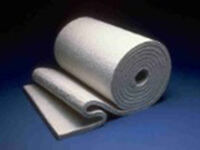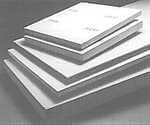Pizza oven insulation – General
When deciding what pizza oven insulation to use when building your hearth, we wanted to cover some key factors to help you make the best decision for your do-it-yourself pizza oven project. On this page, we will cover the basics on whether to use a ceramic fiber insulation like Forno Bravo, or use a more traditional approach with vermiculite or perlite when insulating your hearth and oven. Additional resources and links are provided for those who wish to research this topic in more depth.
Why insulate my pizza oven?
Pizza oven insulation is used primarily to slow down cooling and allow the oven to maintain thermal mass for longer periods of time. While some brick ovens do not use insulation sheets, these ovens will have the heat drawn down much faster, using more fuel and making retained heat cooking more challenging. It goes without saying that without pizza oven insulation, your brick oven can be extremely hot to the touch on the outside. Traditional wood fired pizza ovens can reach temperatures well over 1,000° Fahrenheit (538° Celsius).
Forno Bravo refractory pizza ovens, when properly insulated, can be at full temperature inside the cooking chamber without getting hot on the exterior facade (no more than 140°F when properly insulated).
CAUTION: This doesn’t apply to our stainless steel reflective ovens, as this is a different type of application, more like a BBQ.
FB pizza oven insulation versus vermiculite or perlite
Pros and cons of vermiculite or perlite:
Many do-it-yourself pizza oven builders, as well as importers of authentic Italian brick ovens, are big advocates for using vermiculite or perlite mixed with concrete. These builders will use a 5:1, 6:1 or 7:1 parts insulator to one part concrete to build their hearth and “skin” the pizza oven dome.
There are quite a few advantages to this approach:
- Materials are readily available throughout the world and inexpensive;
- This method of pizza oven insulation has been used for thousands of years, so it is tried and true;
- Both vermiculite and perlite will withstand high temperatures, insulate well, and expand with heat so it doesn’t crack easily.
- When covering the dome, it helps prevent the dome from moving apart when in use, making it popular in mobile catering applications.
However, there are some disadvantages to consider:
- Vermiculite or perlite requires 2 inches (5 cm) for every 1 inch (2.5 cm) of FB insulation board;
- Thicker pizza oven insulation on the hearth means less room below for wood storage;
- Thicker insulation around the dome means you need more real estate for your pizza oven;
- Thicker insulation means you are adding weight to your overall build.
2. These materials may insulate well, but they also expand and contract, which means when used on a hearth, your pizza oven is shifting when heated and cooled down.
3. This process requires additional construction time to mix, pour, and cure your foundation. Ceramic fiber insulation can be laid down in a matter of hours, and requires no cure time.
Pros and cons of FB pizza oven insulation:
Forno Bravo likes to refer to our pizza oven insulation as space-age technology, as opposed to old world philosophy. When discussing our pizza oven insulation, we have to look at two applications: FB insulation blanket for the dome and FB insulation board for your hearth. For the purposes of this page, we will consider both types of insulation the same, but click on either of the product links to understand how each is slightly different.
Advantages to FB insulation:
- FB insulation board is a high strength, high-efficiency Alumina Silicate board originally designed for industrial applications, such as aluminum melting and holding furnaces. One 2″(5 cm) thick layer of FB Board panel reduces the 800ºF cooking floor of a pizza oven to roughly 170ºF at equilibrium, making it roughly twice as efficient as pure Vermiculite board, and even more efficient than poured vermiculite / perlite and Portland cement mixes;
- Ceramic fiber insulation blanket is easily cut and shaped to accommodate any type of build, no mold forming to get the desired shape. You can see how to insulate, lath, and shape an oven on our Youtube channel. You can save several days in construction time;
- You can’t mix it wrong. Just use the correct amount of insulation based on the size of your pizza oven chamber and the thickness of your fire brick;
- Ceramic fiber insulation, since it requires half the thickness of vermiculite, takes up less room and is significantly lighter when fully installed;
- Ceramic fiber pizza oven insulation does not expand and contract as much as the vermiculite and perlite mixed concrete, providing a longer lifespan for your pizza oven.
Disadvantages to FB insulation:
- When cutting it to shape it, air gaps can form. These should be compressed with lath before finishing the oven;
- FB pizza oven insulation doesn’t provide a rigidity to the structure, so if you are looking for a mobile application, you will probably want to use both FB insulation AND a vermiculite / perlite mix. We often suggest “skinning” the dome with a 1″ (2.5 cm) layer of vermiculite / perlite, and then insulating with a FB insulation blanket.
Do you ever use both FB pizza oven insulation AND vermiculite / perlite mixed with concrete?
Yes, when we assembled our pizza ovens into a steel ring like the Napolino series oven, we use vermiculiate mixed in a 6:1 ratio with Portland cement to fill in the voids between the oven dome exterior and the metal ring about 1″ inch (2.5 cm) up the dome from the FB insulation board. This eliminates air voids and acts as an insulator to avoid heat transference to the metal ring.
Summary
Forno Bravo pizza oven insulation is in many ways a superior way to insulate your pizza oven, whether a homemade brick oven using our Pompeii plans, or a modular pizza oven kit from Forno Bravo. We suggest you check out our Forum where 26,000 users post their projects (both Forno Bravo ovens and other ovens,) and answer questions about insulation and a variety of other topics.
FB insulation blanket introduction
FB insulation blanket PDF specification sheet
FB insulation board introduction
FB insulation board PDF specification sheet
Start Shopping




